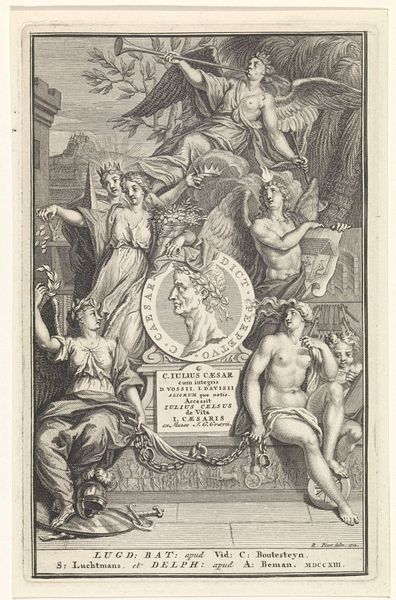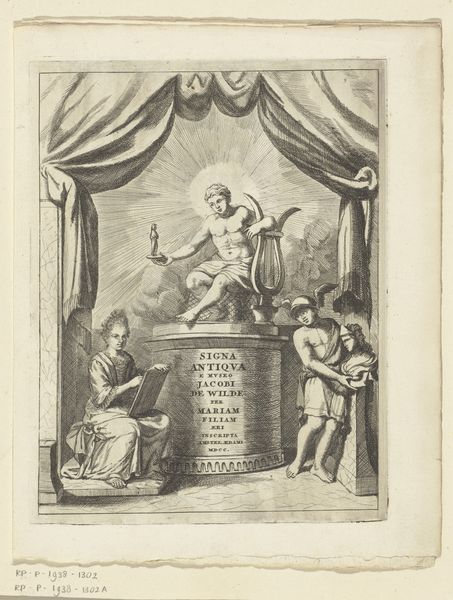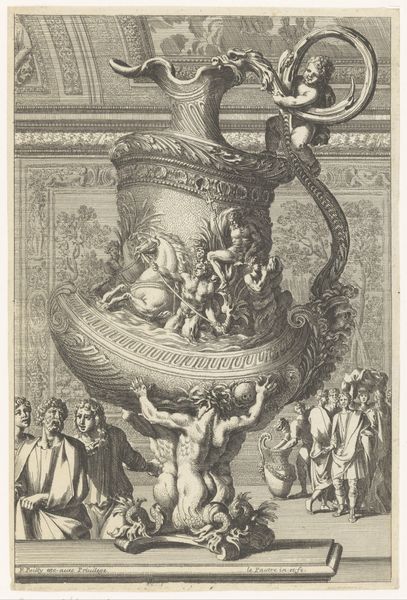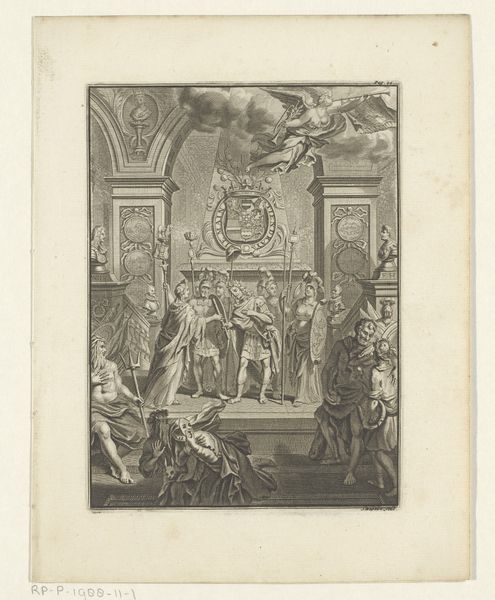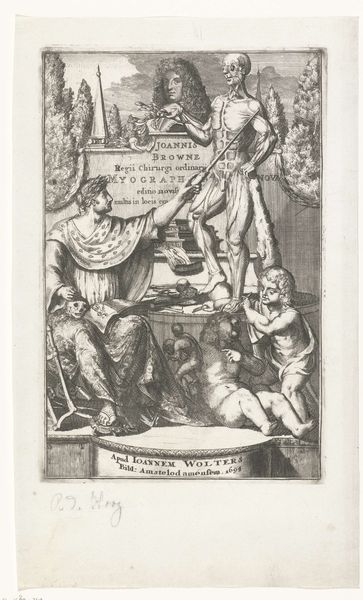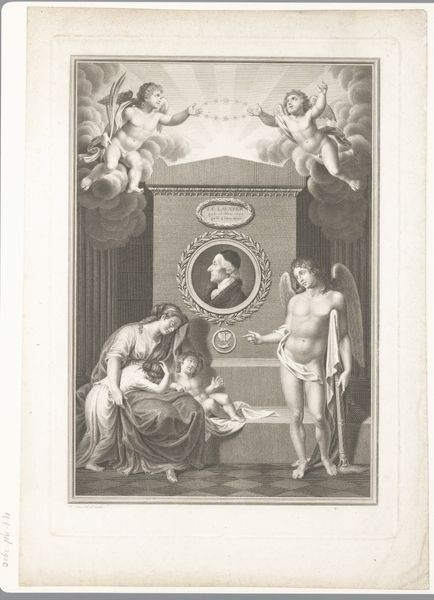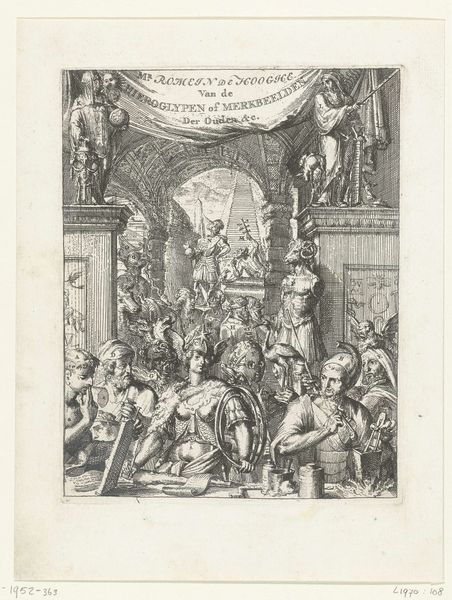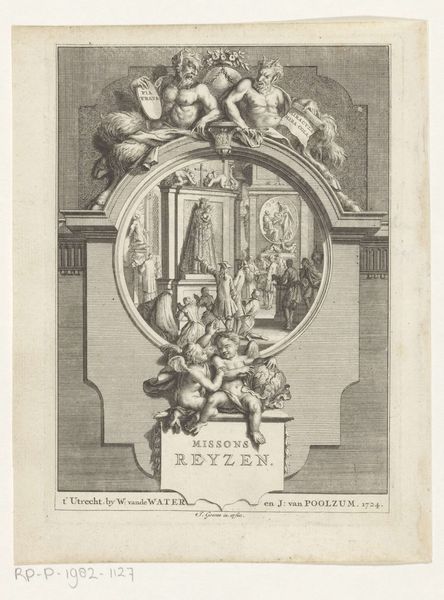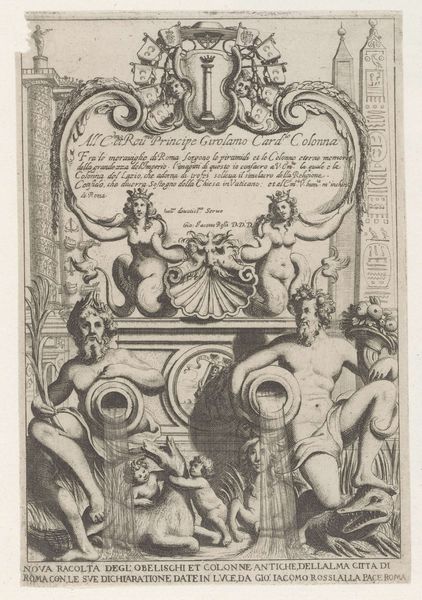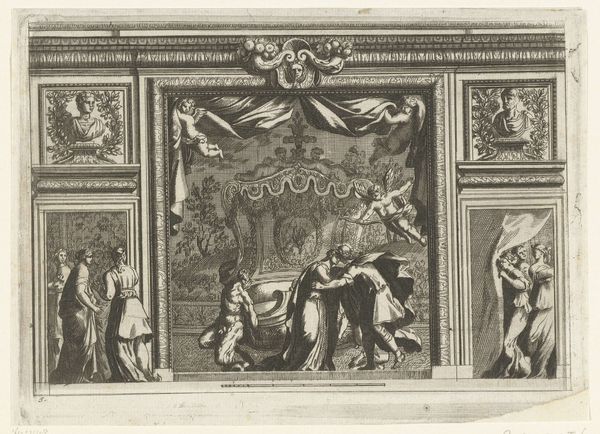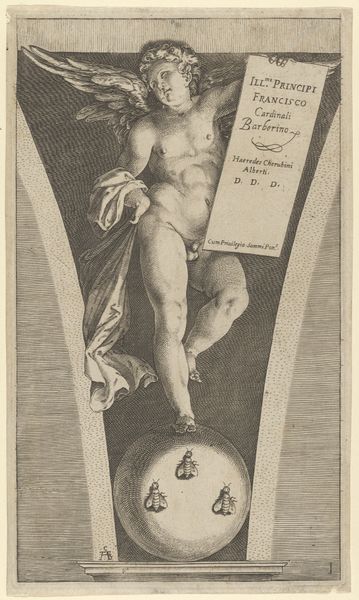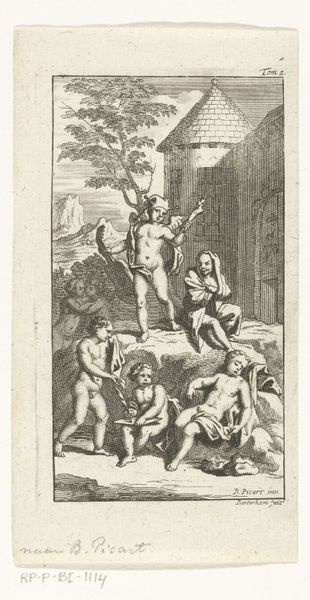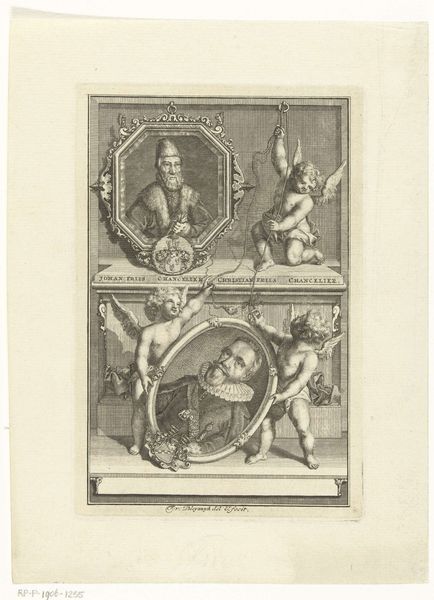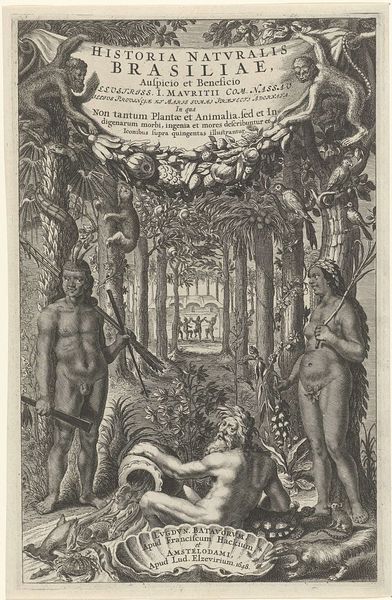
Titelblad: Liure d'Academie pour apprendre a bien dessigner 1682 - 1706
0:00
0:00
print, etching
#
portrait
#
baroque
# print
#
etching
#
old engraving style
#
figuration
#
11_renaissance
#
history-painting
#
academic-art
#
nude
Dimensions: height 239 mm, width 165 mm
Copyright: Rijks Museum: Open Domain
Curator: This print, "Titelblad: Liure d'Academie pour apprendre a bien dessigner" by Jean Lepautre, was created between 1682 and 1706. It's an etching showcasing an academic drawing class. Editor: The detail is astonishing. The crowded classroom and the bold baroque framing device are almost overwhelming, no? Curator: Let's consider the role of academies in the 17th century. These institutions dictated artistic taste and enforced hierarchical standards of subject matter and style. This print actively reinforces these cultural values. We see the students painstakingly copying from a classical nude statue. The act itself becomes almost ritualized. Editor: Absolutely, the print acts as both an advertisement for the book and a commentary on the labour of artistic training. Note the contrast between the polished idealized forms being studied, and the individualized characterizations of the observing students. They all came from different origins, gender presentations and diverse walks of life. The act of observation itself it coded. Curator: And look at the use of line – the way Lepautre utilizes hatching to describe form, create shadow, and suggest the varying textures of skin, drapery, and architectural detail. This reflects printmaking's fundamental nature: the transformation of an idea through reproducible marks and material means. The labour invested into making this art should not be overlooked. Editor: Thinking about materiality reminds us about access, as well. Who would have been able to purchase a "Liure d'Academie" in the 17th century, or be enrolled at a such an academie? It immediately implies a certain class, and most likely a certain gender too, sadly. The composition tells a silent story of who is allowed in the space, or simply put: to learn. Curator: Good point. Ultimately, the print operates as a record of its time, representing and reifying systems of artistic training and class privilege within 17th century French society. Editor: Precisely, seeing through that lens reveals not just artistic technique, but also its deeply interwoven connection to systems of knowledge, labor and social control.
Comments
No comments
Be the first to comment and join the conversation on the ultimate creative platform.
